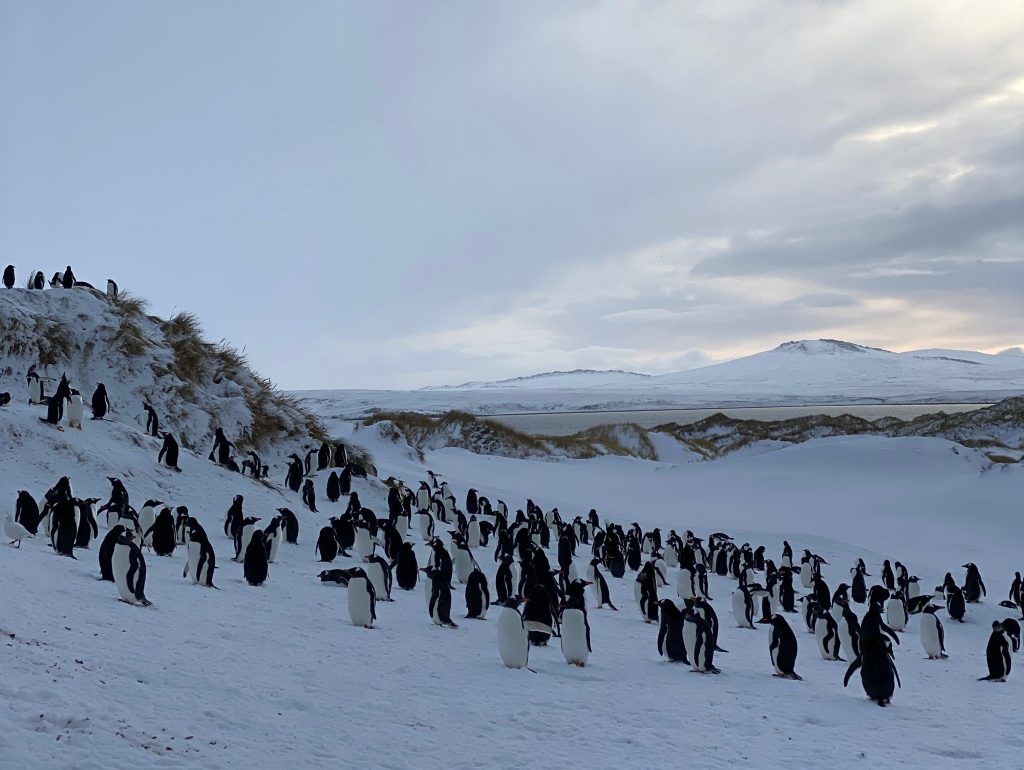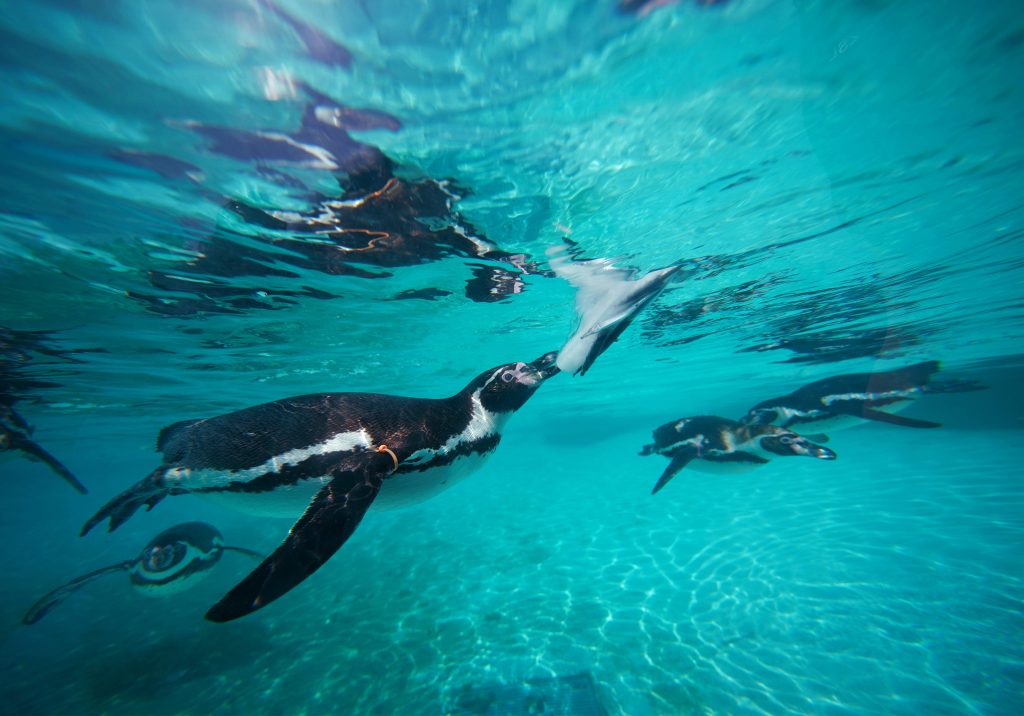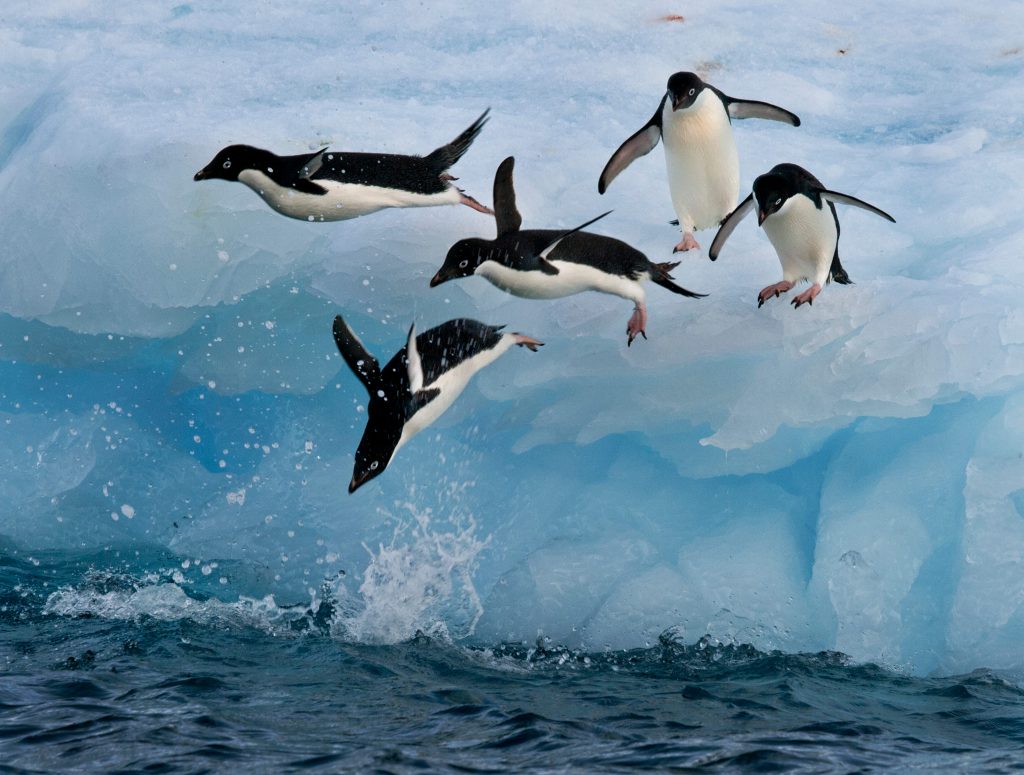- Global temperature changes have been an important driver of penguin evolution, a new study suggests.
- Researchers mapped penguin evolution and identified traits that helped them survive.
- Modern penguins have genetic adaptations that allow them to thrive on both land and in water.
About 60 million years ago, penguins evolved from their flying ancestors into the water-loving swimmers and divers we know today. A new genetic analysis reveals just how they evolved this underwater prowess, offering the most comprehensive overview of the tuxedo-clad bird's evolutionary history to date.
In a new study, published this week in the journal Nature Communications, a team of international researchers analyzed 27 genomes — or the complete set of genetic information — of all living and recently extinct penguin species. Using that genetic data and the existing penguin fossil record, researchers compared the penguin genomes to the genomes of other birds, like pelicans and albatrosses.
They found that penguins evolved in response to ancient climate shifts, making their bodies uniquely specialized to some of the harshest conditions on Earth.
"This paper provides a step change in our understanding of which genes underpin these different adaptations," Richard Phillips, a seabird ecologist at British Antarctic Survey and a co-author on the study, said in a press release.
Temperature changes drove penguin evolution
Ancient penguins originated in Zealandia, a submerged land mass off the coast of Australia, about 60 million years ago. Scientists think from there, they migrated to South America and Antarctica. Around 30 to 40 million years ago, later groups likely hitched rides on a strong ocean current flowing around the globe, called the Antarctic Circumpolar Current.
Penguins lost their ability to fly before the formation of the polar ice sheets, as getting off the ground took too much effort for birds that were becoming expert swimmers.
"Although when most people think of penguins, they picture them among ice floes and being chased by leopard seals, penguins evolved to be aquatic creatures," Phillips said.

Researchers found that global temperature changes have been an important driver of penguin evolution and contributed to the diversification of new species. For example, the expansion of Antarctica's glaciers during the middle-to-late Miocene period, a period roughly 5.3 to 16 million years ago, marked by significant global cooling, coincides with the emergence of modern crown penguins, roughly 14 million years ago.
A suite of genetic adaptations, including body size, underwater vision, heat regulation, and diving ability, allowed these birds to thrive on both land and in water, according to researchers.
For example, some genes made forearm bones shorter, while others reduced penguins' feathers, leading them to develop flippers. Other genes helped penguins store white fat, which works as an insulator and energy source, helping the birds stay warm in bitterly cold environments.
Penguins in a warming world

The way ancient penguins experienced immense climate fluctuations in the past could offer insight into how they are coping with a warming world. Research suggests modern penguins are not coping well. Due in part to to rising temperatures from climate change, half of all living penguin species are classified as either endangered or vulnerable on the IUCN Red List of Threatened Species.
One of the new study's findings is that in warmer temperatures, penguins' rate of evolution slowed. The flightless birds might not be able to handle modern climate change, researchers say, which is happening at a faster clip than the past temperature changes ancient penguins survived.
"Over 60 million years, these iconic birds have evolved to become highly specialized marine predators, and are now well adapted to some of the most extreme environments on Earth," the study authors wrote in the new paper. "Yet, as their evolutionary history reveals, they now stand as sentinels highlighting the vulnerability of cold-adapted fauna in a rapidly warming world."

